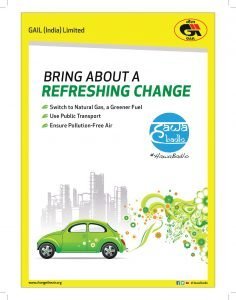MAKING A DIFFERENCE
A man who climbed Everest in search of trash
Jeff Clapp, 54, was born in Connecticut and raised in Presque Isle. He started out as a potato picker before working as a chef and then as an artist. He made ice and wood sculptures of salad bowls, plates and platters. Then, he tried making art of a CO2 tank, cutting grooves into it and forming it into a bell. “It was pretty, but there was not much of a story to it,” Clapp said.
Clapp found the story he was looking for while watching a National Geographic program and seeing images of piles of discarded oxygen cylinders left on Mount Everest. Because of Everest’s 29,035-foot elevation, the air supply is so thin that most climbers must rely on oxygen tanks to reach the summit. An average one uses five to eight oxygen cylinders, which weigh about 20 pounds each, to climb to the top, Clapp said. Since the world’s tallest mountain was first scaled in 1953, hundreds of oxygen tanks have piled up.
“Everything you need to live you have to carry into the mountains,” Clapp said. Clapp realized that the tanks, although rubbish, could be used and sold because of their connection the famed mountain peak. Displaying a slideshow on a Smartboard, Clapp recounted for students his journey in February 2004 to find oxygen tanks. He traveled through the Middle East and Asia along the way, arriving finally in Nepal for a three-week journey. He went in through the base of the valley leading to Mount Everest, loading up yaks with gear and setting out with a separate expedition team of mountaineers.
As it turned out, Clapp was unable to find the piles of oxygen tanks on his way because there had already been a cleanup. Back in Kathmandu, Nepal’s capital city, Clapp was able to purchase 132 oxygen cylinders from the Nepalese Mountaineering Association that had been taken from the mountain. He paid about $6,600 for the tanks and another $5,200 to have them shipped back to Maine. Thus began Clapp’s business, “Bells From Everest.” By himself, Clapp has stripped away the tanks’ fiberglass shells, exposing a black aluminum metal underneath, and then he uses hand tools to shape the cylinders on a lathe and give the metal a silver shine. The bottoms are cut off and turned into bowls, while the tank bodies are carved up with grooves and holes, into musical-sounding bells. Nothing goes to waste. Clapp has taken the leftover metal shavings and, using chopsticks, inserted the shavings into glass ornament balls. The bells and bowls can sell for thousands of dollars — he recently sold a set of three bowls for $6,000 — and Clapp said he’s sold about 60 of each. During the last four years, the ornaments have been sold between $10-$15 each, at craft fairs and gifts shops, including the shop at Walt Disney World’s Expedition Everest roller coaster ride.
Clapp said he served as a “guest artist” at Disney for two years. [ Buyers like getting a unique piece of artwork and knowing that they’re helping the environment at the same time, they see the added value of purchasing a gift item that has social responsibility ] For Clapp, the mission remains to tell the story to a wider audience. Clapp said he had been in talks with a California filmmaker to make a documentary movie, but Clapp decided that it wouldn’t be as relevant now. Clean-up efforts at Everest have intensified in recent years and hikers are now charged a $4,000 weigh-in deposit in case they return with less gear than they set out with. Instead of a documentary film, Clapp said he is in talks about a making a “funny adventure” movie in the style of the 2003 movie “School of Rock,” staring Jack Black. Clapp tossed boxed ornaments to each of the students, telling them to use their imaginations and create “something really impossible,” because he “created a fairly decent business out of trash.” Several students said they were impressed by Clapp’s talk. Derek Davis called it “pretty cool” and said he was surprised that the oxygen tanks were turned into bells, bowls and ornaments. “I thought of making a rocket out of it,” Davis said.


































